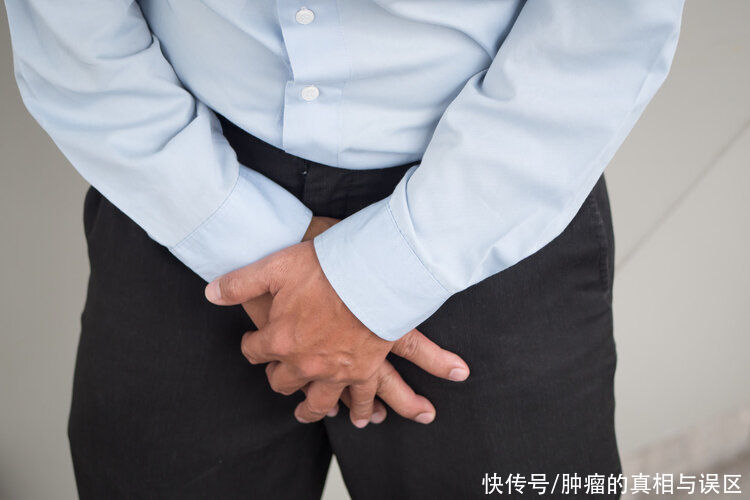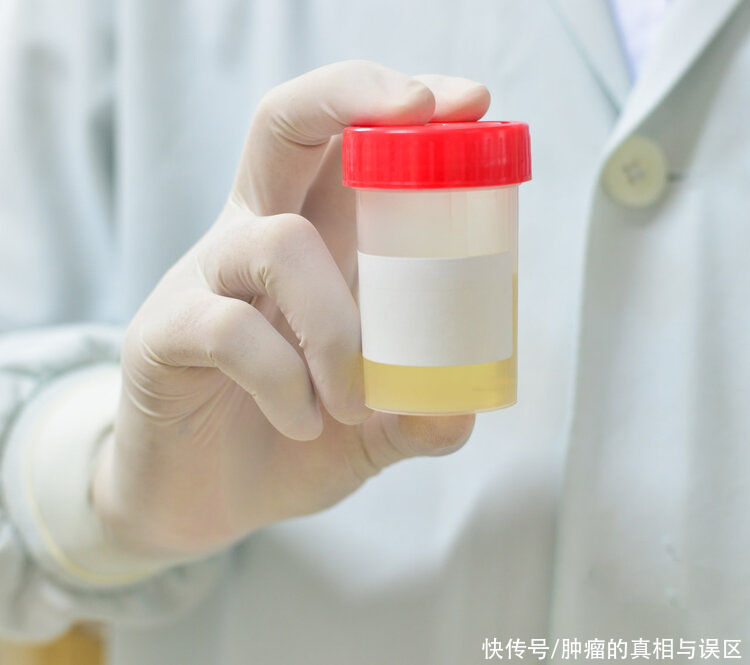Two months ago, Mr. Chen, 39, found himself for several days in a rowurine looked a little red and blood-stained strong>, but there is no other discomfort, and the urination will return to normal after drinking the herbal tea, so he doesn’t care much, he just thinks he is “getting angry”.
Last week, Mr. Chen had hematuria again, this time drinking herbal tea had no effect, and the color continued to appear for several days Red, Mr. Chen was flustered and rushed to the hospital for examination.
After inquiring about the specific situation, the doctor conducted a B-ultrasound examination for Mr. Chen, and found that he an egg-sized mass in his bladder< /span>In the end, Mr. Chen was diagnosed with bladder cancer and required immediate hospitalization.

1. Painless hematuria, beware of tumor attack
When the color of the urine turns red, the first reaction of many patients is that they eat improperly or “get angry”. Generally speaking, the bile excretion is not smooth or they have taken levodopa, metronidazole, phenol red, and sulfonamides. Other drugs may cause the urine to be red in color, but this type of urine just looks like “hematuria”, and red blood cells are generally not found after a routine urine test.
And if there are red blood cells in the urine routine examination, and the number is more than 3 under the microscope, then it is medically called “hematuria”. There are many causes of hematuria, the most common is the urogenital system pathological changes, such as urinary system stones, inflammation, glomerulonephritis, urinary system tumors and so on. Women outside the menstrual period, if the uterus, ovaries, fallopian tubes have inflammatory diseases, may also cause hematuria.
Among the types of hematuria, painless hematuria requires special attention. Data show that in patients with painless hematuria, kidney cancer accounts for 40% and bladder cancer accounts for 50%. Therefore, from the first occurrence of hematuria, the cause should be identified and treated as soon as possible.
Urine specimens should be collected, collected and stored correctly according to the test requirements, which is very important to ensure the reliability of test results. Generally speaking, the urine “three-cup test” is the easiest and most convenient, and it can be done by yourself.
After cleaning the external opening of the urethra, 10-20ML of the initial urine is placed in the first cup, 20-30ML of the middle-stage urine is placed in the second cup, and 5-10ML of the final urine is placed in the second cup. In the third cup, the three cups are marked and sent for inspection. If the first cup of urine is abnormal and the most severe, it indicates that the lesion is in the anterior urethra. If the third cup is abnormal and the most severe, it suggests that the lesion is in the bladder neck or posterior urethra. If the three cups are abnormal and the degree is similar, it suggests that the lesion is in the bladder or upper urinary tract (kidney, ureter).
Other urine test methods include morning urine, random urine, 24-hour or 12-hour urine, sterile urine and other methods of collecting urine samples . Different urine test items have different requirements and processing methods for urine specimen collection.
In addition, it should be noted that not all hematuria can be observed with the naked eye, and the “blood” in the urine of some patients with hematuria is only It can only be seen under a microscope, so it is easier to ignore. Therefore, it is of great significance for the public to prevent diseases by regularly going to the hospital to check the urine routine every year.

Second, if there are 3 abnormalities in urine, it may be a sign of serious illness
< p>The color and state of urine of patients with different diseases are different. Understanding the relationship between these abnormalities and diseases will not only help us find hidden diseases in the body early, but also help in accurate diagnosis and timely treatment in medicine.
1. Changes in urine color
urine is dark yellow or black tea, The upper layer of urine produces yellow foam during oscillation, which is common in diseases of the hepatobiliary system, such as acute hepatitis, cholecystitis, and cholelithiasis. Obstructive jaundice caused by common bile duct stones and pancreatic head cancer is most likely to produce dark yellow urine.
And if white urine appears, beware of filariasis, abdominal wall tuberculosis, abdominal tumor, thoracic and abdominal trauma , inflammation and other problems, may be caused by the mixing of lymphatic fluid containing a large number of fat particles in the urine, also known as chyluria in medicine. Some patients suffer from severe urinary tract purulent disease, the urine contains a large number of pus cells, and white urine may also appear.
Ifurine is black like soy sauce or brown like wine, it indicates acute hemolysis< span>——A large number of red blood cells are destroyed, the content of free hemoglobin in the plasma increases, and it is excreted from the urine, resulting in hemoglobinuria, which is common in blood transfusions with incompatible blood types, fava bean disease, and falciparum malaria complicated by black urine fever. Black urine indicates a dangerous condition, and emergency treatment measures should be taken actively.
2. Abnormal smell
The smell of urine comes from volatile substances in urine , Normal urine has no strong odor. The smell of ammonia in fresh urine, also known as rotten eggs, is often indicative of cystitis and chronic urinary retention, because urea is trapped in the bladder Decomposes to produce ammonia odor. If urine smells like a rotten apple, it’s mostly due to diabetic ketoacidosis.
3. Proteinuria
Normal human urine contains a very small amount Protein, generally not more than 150 mg/, urine routine test results are normally negative. If the results of +, ++, +++, etc. appear in the urine routine examination report, it means that the amount of protein in the urine increases, which is called proteinuria.
Proteinuria includes physiological proteinuria and pathological proteinuriaPee. Strenuous exercise, fever, mental stress, etc. may cause the subject to temporarily develop physiological proteinuria, usually no more than one +, which will disappear after the inducement is removed.
and pathological proteinuria is mostly related to various renal and extrarenal diseases, and it is persistent, such as nephrotic syndrome, renal Glomerulonephritis, hypertension, diabetes, systemic lupus erythematosus, multiple myeloma, etc.

Third, routine urine examination is very important
Many signs of the disease will be reflected in the urine routine examination.It is best for normal people to do a urine routine examination every six months, for early detection Kidney damage is detected and prompt intervention is initiated. And high-risk groups with a family history of diabetes, hypertension, kidney disease, or long-term drug use should preferably have a urine test every 3 to 5 months, after the test results come out, focus on the indicators such as urine protein, urine occult blood, urine sugar, urine ketones, urine red blood cells, and urine white blood cells.
Epidemiological surveys show that in the past 30 years, chronic kidney disease has become one of the major diseases that threaten public health in the world. In fact, a small routine urine examination can detect hidden dangers early. If the urine routine shows abnormalities such as occult blood, protein, red blood cells, and white blood cells, you should go to the nephrology department for further treatment. If the above indicators in the urine routine are all negative, it is still necessary to go to a regular hospital for medical treatment in time according to the condition, so as not to delay the condition and the opportunity for medical treatment.
References:
[1] “Analysis of the Causes of Clinical Misdiagnosis of Chronic Renal Insufficiency”. Clinical Misdiagnosis and Mistreatment.2022-04-20 p>
[2]”Interpretation of the health “password” of urine test”. Chinese medicine health preservation. 2022-03-01
[3]”Analysis of clinical test results of urine occult blood”. Chinese medicine guide .2022-01-20
Without the author’s permission, reprinting is prohibited